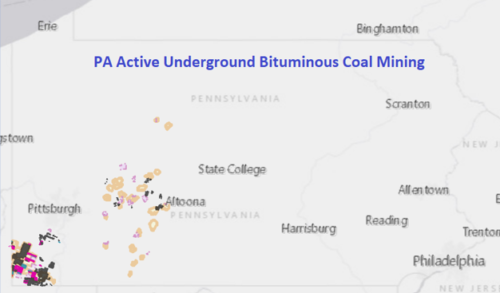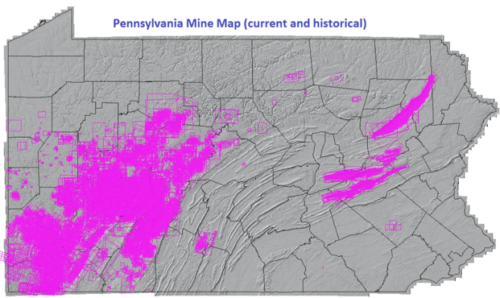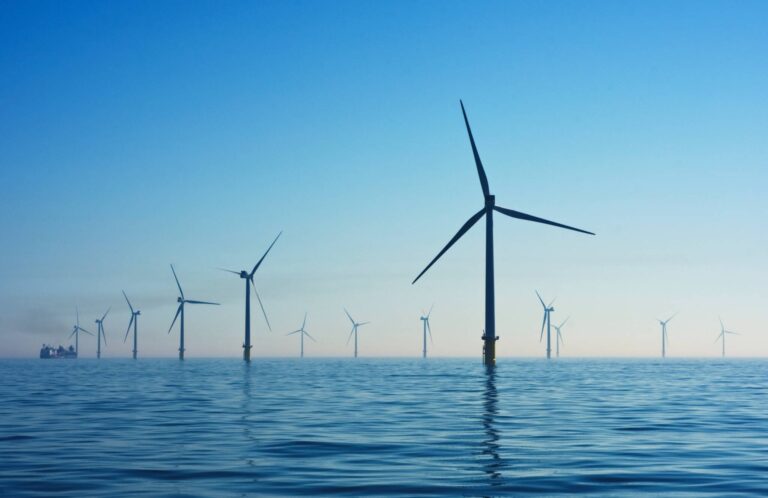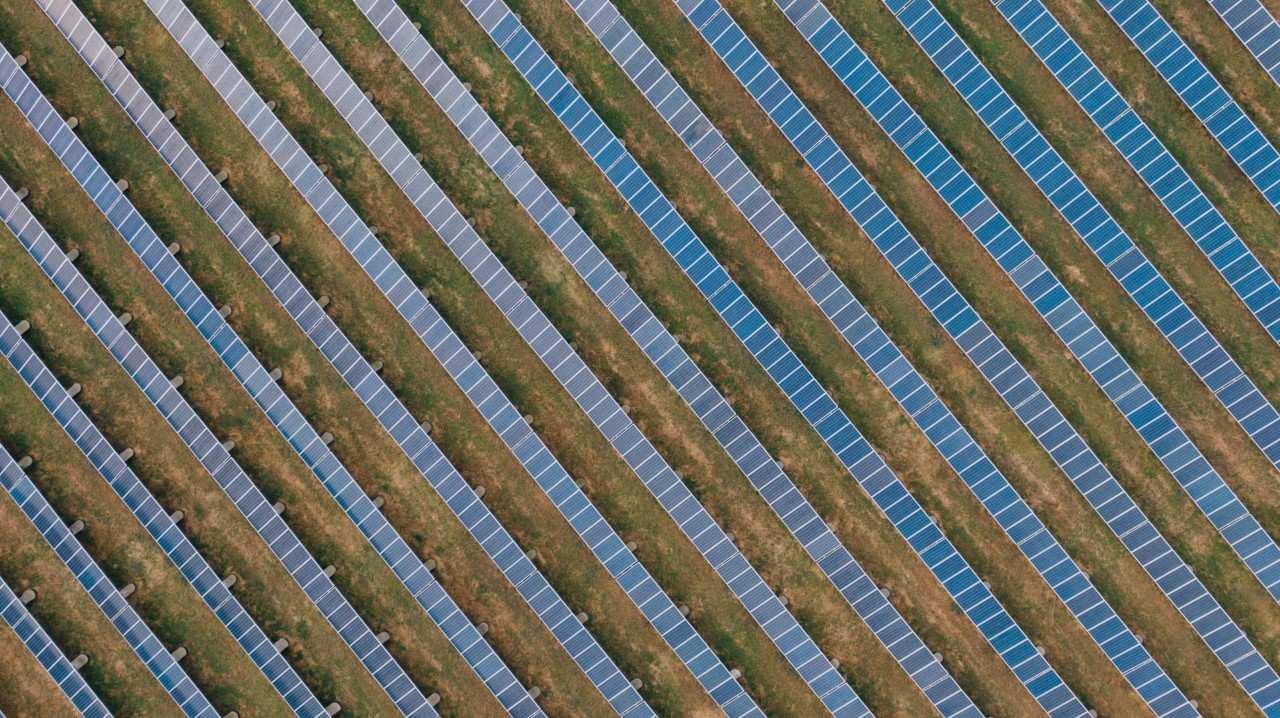Spotlight on Renewable Energy Technology: Coal Mine Geothermal Energy
Though the International Energy Agency (IEA) projects that global coal consumption will rise from 2022 to 2023 before plateauing through 2025, it is expected to drop steeply in the European Union and, to a lesser extent, in the United States from 2022 through 2025. As the United States continues to phase out coal usage, the number of active coal producing mines is dropping precipitously. As of the most recent EIA annual coal report released in October 2022, there are now only 174 active underground coal mines in the United States; nearly a fifth of these are in Pennsylvania alone. Moreover, there are already estimated to be more than 5,000 unused underground coal mines in Pennsylvania.
For the countless communities around the world located near coal mines, geothermal energy produced from abandoned coal mines represents a major opportunity in places where coal production is declining and where its use will eventually be discontinued. Not only are coal mines an abundant source of energy, the development of geothermal energy from them can also breathe new life into areas that might otherwise be left behind economically as coal is phased out. This could make coal mine geothermal energy a powerful tool in a more equitable transition to clean energy. In the United States, this potential is still largely untapped; however, the Biden administration recently earmarked $450 million from the Inflation Reduction Act and the Bipartisan Infrastructure Law for renewable energy projects at abandoned coal mines. While some of these projects will consist of solar arrays, others may include geothermal energy as well.


(PA Department of Environmental Protection)

(Penn State University Pennsylvania Mine Map Atlas)
How Coal Mine Geothermal Energy Works
Geothermal energy can be produced from coal mines from the water that is naturally present there. During active mining, groundwater seeps into coal mines and needs to be constantly pumped out in order for mining activity to occur. However, once they are no longer in use, mines fill with warm water that remains the same temperature year round. In order to heat houses and buildings, this water can be pumped to the surface through bore holes and passed through heat exchangers and heat pumps. The water can then be returned to the mine to reheat. Not only is the water a suitable temperature to heat buildings in the winter, it can also keep building temperatures mild in warmer months. Additionally, researchers in Scotland are studying the viability of using geothermal energy from coal mines for data centers, which are energy intensive and require massive amounts of water to cool. In this usage, the process would simultaneously cool the data centers and heat other nearby buildings. The heat from data centers would be pumped into coal mines, then the added heat in the coal mine water would be pumped back out to heat other structures, as shown in the following diagram.

Adoption of Coal Mine Geothermal Energy in the United Kingdom
The United Kingdom can serve as an example of government collaboration to find climate change solutions and a test case for widespread utilization of abandoned coal mines for geothermal energy. The UK Coal Authority, which is the government body responsible for former mines and mining communities, estimates that 25% of the country’s houses are located above or near former coal mines. Given the prevalence of abandoned coal mines and the fact that heating accounts for about half of the United Kingdom’s energy needs, there has been a large push there over the past several years to develop coal mine geothermal energy for heating. Experts cite two advantages that coal mine geothermal energy has over natural gas heating: 1) its carbon emissions are about a quarter of that of gas, and 2) it costs about 10% less than gas. Following a particularly challenging time in the wake of the Russian invasion of Ukraine marked by skyrocketing energy costs in Europe, the use of coal mine geothermal energy has the added potential to bolster the United Kingdom’s energy independence. These benefits, combined with the anticipation of economic revitalization through investment and job creation, make coal mine geothermal energy an attractive solution to help achieve the United Kingdom’s goal of net-zero greenhouse gas emissions by 2050.
After three years of development, the most extensive mine water heating plant in the United Kingdom became active in Gateshead, England in March 2023, supplying heat to Gateshead College, the Baltic Arts Centre, several offices and 350 residences. Planned additions to the system include 270 more houses, a hotel, and a conference center. In all, the project will save an estimated 1,800 metric tons of carbon dioxide emissions per year, which is approximately equivalent to the annual greenhouse gas emissions from 400 gasoline-powered passenger vehicles. Another large project currently in development in the United Kingdom is the Seaham Garden Village, which is designed to heat 1,500 new houses and save over 2,600 metric tons of carbon dioxide emissions per year, or the equivalent of the annual greenhouse gas emissions from nearly 580 gasoline-powered passenger vehicles. Both of these projects are funded and supported by various local and national government entities, providing a crucial case study of best practices for state, local, and federal policymakers.
Potential for Coal Mine Geothermal Energy in the United States
Renewable energy projects on coal mine sites can play a vital role in the clean energy transition. Some of the key advantages of these projects include the ability to repurpose degraded land, revitalize local economies, and, for coal mine geothermal energy in particular, to produce energy more sustainably and with a lower carbon footprint than fossil fuels. The United States Department of Energy estimates that there are about 17,750 coal mine sites that can be used for clean energy projects in the United States, which could generate enough energy (around 90 GW) to power almost 30 million residences. Disused coal mines can pose both environmental and safety risks, such as water pollution from mine drainage and hazardous or explosive gas leakage, so redeveloping them for new geothermal energy plants puts otherwise unserviceable and unsafe land back to use. The cleanup of these often unsafe, polluted abandoned mines further contributes to the broader goals of equity in the clean energy transition and environmental justice. Another advantage to developing renewable energy on coal mine sites is economic. The aforementioned funds set aside by the Biden administration for clean energy projects on former coal mine sites are specifically intended for projects with demonstrable benefits “to mine operations, local energy infrastructure, and to the mining communities themselves”, highlighting the potential of these projects to achieve equitable solutions to Americans’ energy needs by focusing on the welfare of local communities. According to the United States Bureau of Labor Statistics, coal mining jobs have been halved since 2012, which means about 50,000 jobs have been eliminated. New renewable energy projects will likely create jobs, provide opportunities for some former coal miners, and revitalize the economies of some of the areas hardest hit by the decline of coal. Additionally, coal mine geothermal energy is a sustainable source of energy because it uses naturally occurring water from the mine, which is recycled back into the mine after use to reheat and be used again. The process also emits only 25% of the carbon emissions of natural gas.
Challenges of Coal Mine Geothermal Energy
While clean energy projects on coal mine sites represent considerable potential, there are some challenges as well. One challenge is locational specificity. Geothermal energy extracted from coal mines is only useful to the immediately surrounding area, and not all mines are close enough to a large enough population to make sense for development. For example, technological and clean energy investment in coal regions, like Appalachia, has also been limited thus far. Moreover, coal mine geothermal energy can be costly to develop, both in regards to the initial setup and to retrofitting buildings to be able to use geothermal energy. However, recent moves by the Biden administration are aimed to encourage renewable energy investment in these areas and support the development of associated technologies through grants and tax incentives. Furthermore, due to coal’s negative legacy and contribution to global warming, there is a stigma around coal regions when it comes to investment. But as the Coal Authority in the United Kingdom is demonstrating, the mines that initially powered the Industrial Revolution and subsequently exacerbated the climate crisis can now be repurposed for use in a technology that helps reduce carbon emissions. With aid from investors and the federal government, the United States can do the same for our coal regions, supplying them with lower cost, lower carbon energy while at the same time providing them with more employment and economic growth opportunities. Despite the possible challenges, encouraging renewable energy development, like coal mine geothermal energy, in coal regions around the world will play an important role in the equitable transition to clean energy.
Opportunity for Coal Mine Geothermal Energy in Pennsylvania
Considering the substantial number of coal mines, both active and abandoned, in Pennsylvania, deployment of renewable energy technologies on coal mine sites represents a significant opportunity for Pennsylvania to become a clean energy leader in the United States. Developing coal mine geothermal energy wherever feasible in our state could be a huge step in an equitable and sustainable transition to renewable energy. Not only could it provide cheaper energy with lower carbon emissions to former coal towns and cities, but it could also help bring economic prosperity back to these areas, put former miners back to work in the energy sector, and clean up the environmental hazards left behind from mining, ultimately improving quality of life for nearby residents. As in the United Kingdom, geothermal energy from abandoned coal mines in Pennsylvania could allow the state to come full circle, from a coal-powered leader of the Industrial Revolution to an innovative leader of the clean energy transition.





